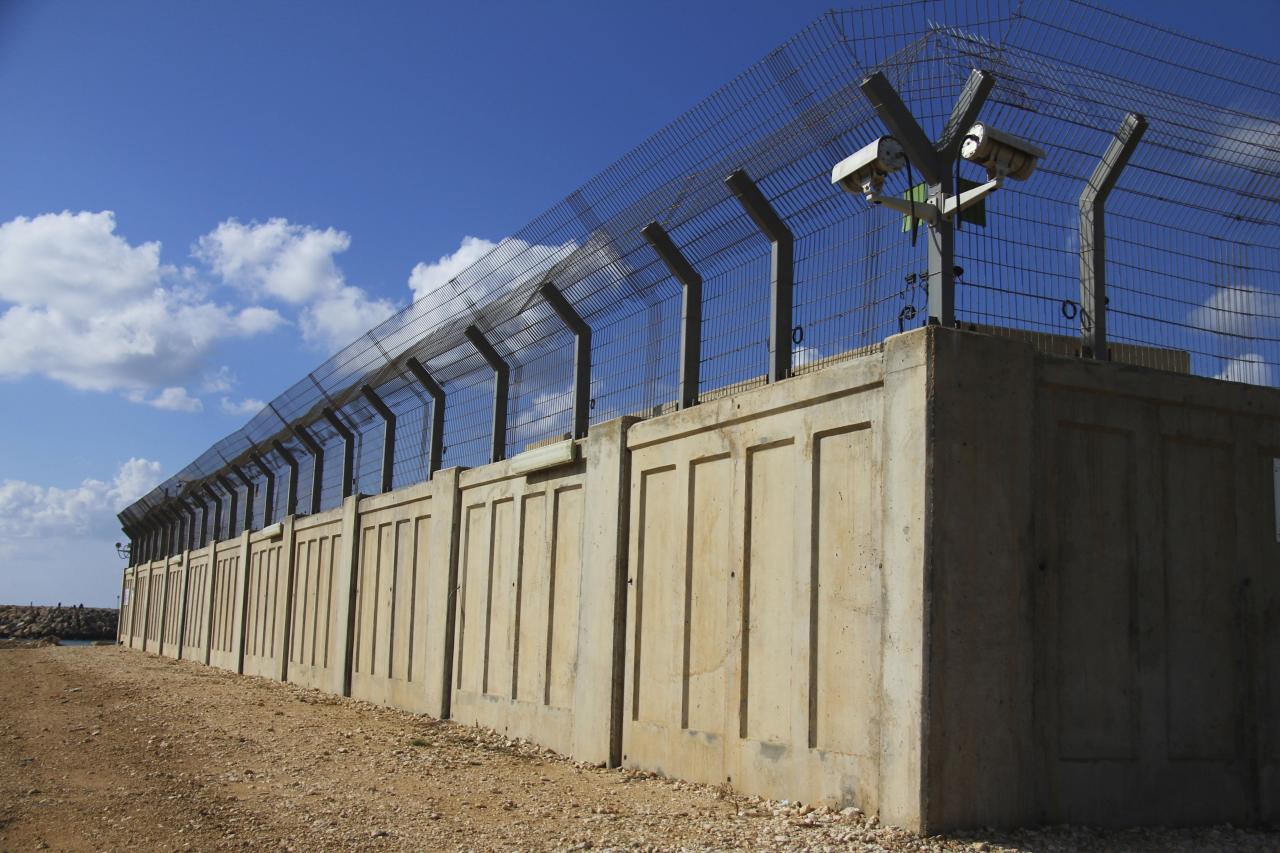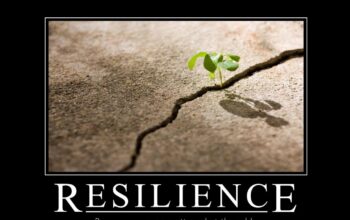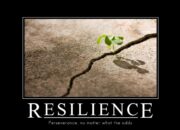In an unpredictable world, safeguarding your well-being and assets is more crucial than ever. While many aspects of life are beyond our direct control, establishing a robust financial safety net provides a critical layer of protection against unforeseen circumstances. This isn’t just about having a rainy-day fund; it’s a comprehensive strategy involving a mix of prudent planning, strategic investments, and the right protective measures designed to absorb financial shocks and ensure long-term stability. This article delves deep into what constitutes an ultimate financial safety net, exploring its essential components, the diverse strategies for building and maintaining it, its profound psychological and economic benefits, and the emerging trends that are shaping how individuals and families secure their future.
A financial safety net is a proactive set of resources and plans designed to provide financial stability and peace of mind when unexpected events occur. It’s not a luxury; it’s a fundamental necessity in an adult’s financial journey. Think of it as a multi-layered defense system, each layer providing protection against different types of financial threats.
The primary goals of building a robust financial safety net include:
A. Protection Against Income Loss: Safeguarding against job loss, illness, or disability that prevents you from working. B. Mitigation of Unexpected Expenses: Covering unforeseen costs like medical emergencies, home repairs, or car breakdowns. C. Preservation of Assets: Shielding your savings and investments from being depleted by crises. D. Maintenance of Lifestyle: Ensuring that a sudden financial shock doesn’t force drastic and undesirable changes to your living standards. E. Peace of Mind: Reducing financial stress and allowing you to make rational decisions during difficult times.
Without this safety net, individuals and families are vulnerable to falling into debt, depleting their long-term savings, or even facing bankruptcy when life throws a curveball.
Essential Pillars of Your Security Net
Building a truly ultimate financial safety net requires a strategic approach, focusing on several interconnected pillars. Each pillar addresses a specific area of financial vulnerability.
A. The Emergency Fund: Your First Line of Defense
This is the cornerstone of any financial safety net. An emergency fund is a readily accessible pool of money specifically earmarked for unexpected expenses or periods of income disruption.
- Purpose: To cover essential living expenses (housing, food, utilities, transportation) if you lose your job, face a medical emergency, or incur a significant unforeseen expense that your regular budget can’t absorb. It prevents you from dipping into retirement savings or racking up high-interest debt.
- Size: Financial experts generally recommend having three to six months’ worth of essential living expenses saved in your emergency fund. For those with less stable income (e.g., freelancers, commission-based sales), or with significant financial dependents, extending this to nine to twelve months might be prudent.
- Accessibility: The fund should be kept in a highly liquid account, such as a high-yield savings account or a money market account. It should not be invested in volatile assets like stocks, as you need to access it without risk of loss during a downturn.
- Growth: While liquidity is paramount, choosing a high-yield savings account helps your money grow slightly over time, offsetting some inflation, without compromising accessibility.
Building this fund requires discipline and prioritizing savings over discretionary spending until the target amount is reached.
B. Comprehensive Insurance Coverage: Risk Transfer
Insurance is a critical component of a financial safety net, acting as a mechanism to transfer financial risk from you to an insurance provider. Instead of bearing the full cost of a catastrophic event yourself, you pay a smaller, regular premium.
- Health Insurance:
- Purpose: Protects against the astronomical costs of medical emergencies, illnesses, and injuries. Without it, a single serious health event can lead to bankruptcy.
- Considerations: Choose a plan that balances premiums, deductibles, co-pays, and out-of-pocket maximums based on your health needs and financial capacity. Understand network restrictions and prescription coverage.
- Life Insurance:
- Purpose: Provides financial security for your dependents (spouse, children, elderly parents) if you were to pass away unexpectedly. It replaces your income and can cover debts, funeral expenses, and future living costs.
- Types: A. Term Life Insurance: Provides coverage for a specific period (e.g., 10, 20, 30 years). It’s generally more affordable and suitable for covering periods of high financial responsibility (e.g., while raising a family, paying a mortgage). B. Whole Life Insurance (and other permanent policies): Provides lifelong coverage and builds cash value over time. More complex and expensive, often debated for its investment component versus pure insurance.
- Coverage Amount: Typically, 10-15 times your annual income, plus consideration for outstanding debts and future goals (e.g., college education for children).
- Disability Insurance:
- Purpose: Replaces a portion of your income (typically 50-70%) if you become unable to work due to illness or injury. This is often overlooked but is statistically more likely than death during your working years.
- Types: A. Short-Term Disability (STD): Covers a brief period (e.g., 3-6 months). Often provided by employers. B. Long-Term Disability (LTD): Kicks in after STD expires and can cover you for years or even until retirement, depending on the policy.
- Considerations: Understand the definition of “disability” in the policy (own occupation vs. any occupation), waiting periods, and benefit periods.
- Homeowners/Renters Insurance:
- Purpose: Protects your dwelling, personal belongings, and provides liability coverage in case of accidents on your property.
- Considerations: Understand coverage limits, deductibles, and exclusions (e.g., flood or earthquake coverage often requires separate policies).
- Auto Insurance:
- Purpose: Mandatory in most places, it covers damages and injuries resulting from car accidents. It includes liability, collision, and comprehensive coverage.
- Considerations: Choose adequate liability limits to protect your assets.
- Long-Term Care (LTC) Insurance:
- Purpose: Covers the costs of extended care at home, in assisted living facilities, or nursing homes, which Medicare typically does not. This is crucial as healthcare costs in old age can be astronomical.
- Considerations: Best purchased when younger and healthier to lock in lower premiums.
The key to effective insurance is understanding your risks and ensuring your coverage is appropriate without being excessive, balancing protection with affordability.
C. Debt Management: Eliminating Vulnerabilities
High-interest debt is a significant vulnerability that can cripple any financial safety net. Effective debt management is essential.
- Prioritize High-Interest Debt: Focus on paying off credit card debt, personal loans, and other high-interest obligations first. The interest payments drain your resources and make it harder to save.
- Avoid Unnecessary New Debt: Resist the temptation to take on new debt for depreciating assets or non-essential items.
- Refinance or Consolidate: Explore options to lower interest rates on existing debts through refinancing or consolidation loans.
- Maintain a Good Credit Score: A strong credit score is a vital part of your financial safety net, enabling access to favorable loan terms for mortgages or car loans when genuinely needed, and even impacting insurance premiums.
Minimizing debt frees up cash flow for savings and investments, strengthening your overall financial position.
D. Diversified Investments: Growth and Resilience
While an emergency fund is for immediate liquidity, strategic investments are crucial for long-term growth and resilience against inflation.
- Retirement Accounts (401(k), IRA, etc.):
- Purpose: Long-term savings for your post-working life. Contributions are often tax-advantaged.
- Diversification: Invest across different asset classes (stocks, bonds, real estate) and geographies to spread risk.
- Employer Match: Always contribute at least enough to get the full employer match in a 401(k), as it’s free money.
- Non-Retirement Investment Accounts: For savings beyond retirement goals, consider brokerage accounts for diversified investments.
- Real Estate: Owning a home can be a stable asset, but ensure you have an emergency fund and insurance to cover potential issues. Real estate investment properties can provide income and diversification.
- Education Savings (529 plans, etc.): For families, saving for children’s education can prevent future debt for them and financial strain on you.
Diversification is key to managing risk. A well-diversified portfolio is less susceptible to downturns in any single market segment, providing a more stable path to wealth accumulation.
Strategies for Building and Maintaining Your Net
Building an ultimate financial safety net isn’t a one-time event; it’s an ongoing process that requires discipline, review, and adaptation.
A. Budgeting and Tracking Expenses
You can’t manage what you don’t measure. A detailed budget is the roadmap for your financial safety net.
- Understand Your Cash Flow: Know exactly how much money comes in and where every dollar goes.
- Identify Spending Leaks: Pinpoint areas where you can cut back to free up money for savings and debt repayment.
- Automate Savings: Set up automatic transfers from your checking account to your emergency fund and investment accounts each payday. This “pay yourself first” strategy removes the temptation to spend.
- Use Budgeting Tools: Utilize apps, spreadsheets, or online tools to track spending and stick to your budget.
B. Regular Financial Review and Adjustment
Your financial situation and life circumstances change, and your safety net must adapt.
- Annual Review: At least once a year, review your budget, emergency fund size, insurance coverage, and investment portfolio.
- Life Event Triggers: Review your safety net after major life events like marriage, divorce, birth of a child, job change, or purchasing a home. These events often necessitate adjustments to insurance coverage, beneficiaries, and savings goals.
- Inflation Adjustment: Periodically adjust your emergency fund and insurance coverage to account for inflation, ensuring they retain their real value.
C. Skill Development and Career Planning
Your human capital—your ability to earn an income—is arguably your most valuable asset.
- Continuous Learning: Invest in yourself through education, skill development, and certifications to enhance your employability and earning potential.
- Networking: Build and maintain professional relationships that can provide opportunities or support during career transitions.
- Contingency Career Plan: Consider what you would do if your current industry faced a downturn. Could you pivot? Do you have transferable skills?
- Multiple Income Streams: Where possible, explore side hustles, freelance work, or passive income sources to diversify your income and reduce reliance on a single employer.
Strengthening your earning potential makes your safety net more robust by reducing the likelihood of prolonged income loss.
D. Legal and Estate Planning
Beyond financial assets, protecting your decisions and legacy is vital.
- Will and Testament: Ensures your assets are distributed according to your wishes and can name guardians for minor children.
- Power of Attorney: Designates someone to make financial decisions on your behalf if you become incapacitated.
- Healthcare Directive/Living Will: Outlines your medical treatment preferences if you cannot communicate them yourself.
- Trusts: Can be used for complex estate planning, protecting assets, or providing for specific beneficiaries.
While often overlooked, these legal documents are a critical layer of your ultimate security net, ensuring your wishes are honored and your loved ones are protected during difficult times.
The Profound Benefits of a Strong Safety Net
Beyond the tangible financial protections, having a robust safety net delivers significant psychological and economic advantages.
A. Reduced Stress and Enhanced Peace of Mind
Knowing you’re prepared for the unexpected alleviates a tremendous amount of financial anxiety. This peace of mind allows you to:
- Sleep Better: Less worry about financial catastrophes.
- Focus on Other Areas of Life: Redirect mental energy from financial stress to personal growth, relationships, and well-being.
- Make Better Decisions: Avoid impulsive, fear-driven financial choices during a crisis.
B. Greater Financial Freedom and Flexibility
A safety net doesn’t restrict you; it liberates you.
- Opportunity to Take Risks: With a fallback, you might be more willing to pursue a career change, start a business, or take calculated investment risks that could lead to greater rewards.
- Avoid Debt Traps: Less likely to fall into high-interest debt cycles during emergencies.
- Seize Opportunities: Able to capitalize on unexpected opportunities (e.g., a sudden real estate deal, a new investment) because you have available capital.
C. Faster Recovery from Setbacks
When a crisis hits, a strong safety net significantly shortens the recovery period.
- Maintain Momentum: You can focus on resolving the issue at hand rather than scrambling for funds.
- Protect Long-Term Goals: Your retirement and investment accounts remain intact, allowing them to continue growing.
- Preserve Credit: Avoid defaulting on payments, keeping your credit score healthy for future needs.
D. Enhanced Negotiating Power
Whether it’s negotiating a salary, a car purchase, or a home repair, having financial liquidity gives you leverage. You’re less desperate, more patient, and able to walk away from unfavorable deals.
E. Protection of Loved Ones
Ultimately, a robust financial safety net extends its protection to your family and dependents. It ensures their continued well-being, education, and lifestyle even if you are no longer able to provide for them. It’s a profound act of love and responsibility.
Emerging Trends Shaping Financial Security
The financial landscape is always evolving, and new trends are emerging that influence how we build and perceive our financial safety nets.
A. Digital Tools and Fintech Solutions
The rise of financial technology (Fintech) is making it easier than ever to manage, save, and invest.
- Automated Savings Apps: Apps that round up purchases or use AI to identify optimal times to transfer small amounts to savings.
- Robo-Advisors: Automated investment platforms that provide diversified portfolios at lower fees, making investing more accessible.
- Budgeting Software: Sophisticated apps that link to bank accounts, categorize spending, and provide real-time insights into financial health.
- Personalized Insurance Platforms: Online aggregators and AI-driven platforms that help individuals compare and customize insurance policies more efficiently.
These tools empower individuals to take more active control of their financial security.
B. Focus on Holistic Well-being
Beyond just money, there’s a growing recognition that financial well-being is intrinsically linked to mental and physical health. A financial safety net contributes to overall well-being by reducing stress, which in turn can positively impact health outcomes. Financial wellness programs, often offered by employers, are becoming more common, recognizing this holistic connection.
C. Gig Economy and Income Volatility
The rise of the gig economy and freelance work means more individuals face inconsistent income. This trend highlights the even greater importance of a robust emergency fund and proactive tax planning for self-employed individuals. It also drives demand for more flexible insurance products.
D. Cyber Security and Digital Asset Protection
As more of our financial lives move online, protecting against cyber threats becomes a crucial part of the safety net. This includes:
- Strong Passwords and Multi-Factor Authentication (MFA): Essential for protecting online banking and investment accounts.
- Identity Theft Protection: Services that monitor for fraudulent use of your personal information.
- Awareness of Scams: Educating oneself about phishing, ransomware, and other online scams.
- Digital Estate Planning: Planning for access to digital assets (cryptocurrency, online accounts, social media) after one’s passing.
E. Climate Change and Catastrophe Preparedness
The increasing frequency and intensity of natural disasters underscore the need for adequate homeowners insurance, flood insurance, and disaster preparedness funds. Financial safety nets must account for the growing risks posed by climate change, including potential displacement and property damage.
F. ESG Investing (Environmental, Social, Governance)
A growing number of individuals are seeking to align their investments with their values. While not directly a safety net component, ESG investing can offer a sense of purpose and long-term resilience by investing in companies committed to sustainable practices, potentially leading to more stable long-term returns.
Conclusion
In a world characterized by constant change and unforeseen challenges, building an ultimate financial safety net is no longer optional; it is the fundamental cornerstone of personal stability and long-term prosperity. It’s a dynamic, multi-faceted construct that goes far beyond a simple savings account. It encompasses a disciplined emergency fund, strategic and comprehensive insurance coverage, diligent debt management, diversified investments for growth, and thoughtful legal and estate planning.
The profound benefits extend beyond mere monetary protection, touching upon crucial aspects of mental well-being, decision-making clarity, and the ability to confidently pursue opportunities. As technological advancements continue to reshape financial services and new societal trends emerge, the methods for building and maintaining this net will evolve, but its core importance will remain steadfast. By proactively fortifying your financial defenses, you empower yourself not just to weather any storm, but to emerge stronger, more resilient, and truly prepared for whatever the future may hold. Your ultimate security net isn’t just about what you own; it’s about the invaluable peace of mind and freedom it affords you.










